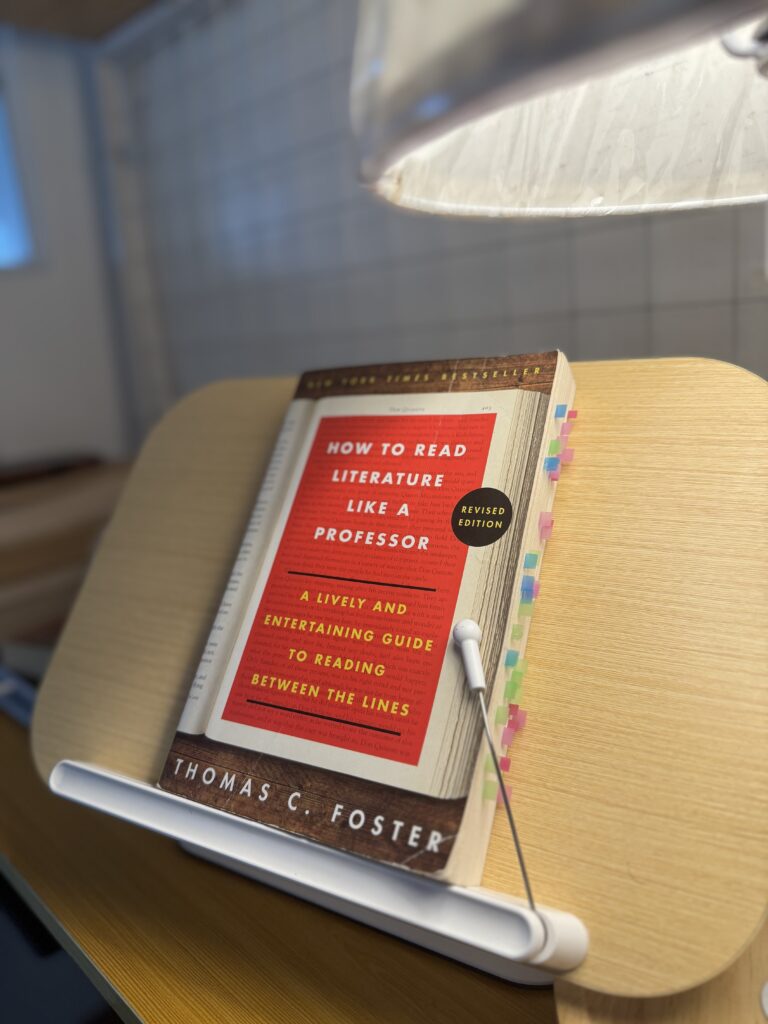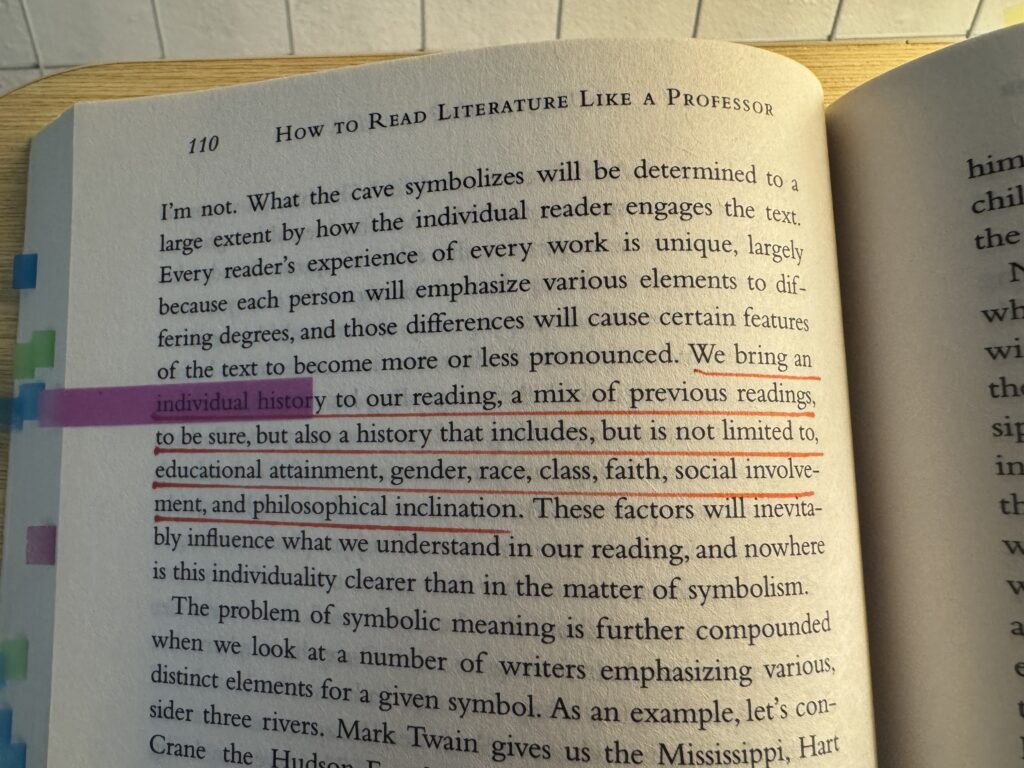
| Title: | How to Read Literature Like a Professor |
| Author: | Thomas Foster |
| Year Published: | 2003, 2014 |
| Rating: | ⭐️⭐️⭐️⭐️⭐️ |
| Date Read: | Feb. 12, 2025 – Feb. 13, 2025 |
I saw this book at Booksale and thought it would help me better appreciate novels and other literature and so I picked it up. It’s conversational and was an easy read. The insights and examples in this book just might have dramatically changed how I read literature moving forward which makes this book worth it.
What is the book about?
This book teaches how to think about the secondary meaning of elements in imaginative literature (plays, poems, epics, and novels) in order to have a richer and more rewarding reading experience and make reading more fun.
Let me define what secondary meaning means. Imaginative literature can have two kinds of meanings: the primary meaning and the secondary meaning. The primary meaning deals with the story itself, the action, and the arguments. On the other hand, the secondary meaning deals with the symbolic representation of the elements in the story.
For example in Nabokov’s Lolita (don’t worry this is not a spoiler), the story revolves around how Humbert manipulates Lolita into having an illicit relationship with him. You can determine that the story is about abuse and trauma; that it deals with human relationships; that it contains dark humor; that it is in first person central perspective which makes the reader sympathize with the narrator, etc. and you would get the primary meaning of the book.
On the other hand, to get the secondary meaning, you would need to have knowledge of common figurative elements used by writers all throughout history. And those can be endless. For example, you can look at Humbert as a sort of vampire. A vampire places his desires above the needs of others. A vampire grows in strength by weakening somebody else. You can also look at how Humbert dies of a heart condition (this is not a spoiler since this is in the first page of the book), and agree that this is an appropriate way for him to die, because all throughout the story, we could see how he’s had a defective and depraved heart, in a figurative sense.
So the author teaches us how to spot and think about these symbolic patterns by giving us finite examples in existing literature with the most common literary conventions and patterns so that we can begin to spot them and determine their meaning on our own. And as we grow our knowledge by reading more literature, we can notice more of these patterns, especially those not included as examples in this book, and have more fun.
What is being said in detail? How is it being said?
The author goes through several figurative elements in literature like quests, meal times, vampirism, weathers and seasons, flying, sex, baptisms, geography, and physical marks. He explains what these elements can signify and provides examples in existing literature.
He does this in a conversational tone which is a good choice in my opinion. Why? Because this is not an encyclopedia of all the symbolic patterns in literature. No one can do that because it’s endless. And even then no one wants to read that. Having this in conversational tone allows for easier readability which allows us to follow the author’s thoughts as he provides examples throughout the book. The goal of the author is to teach us how to start thinking of the symbolisms on our own by giving us examples to start with.
What I found to be the more important chapters were Chapter 4, Interlude 1 and 2, and Chapters 25 & 26. It is in these chapters where we learn about deeper concepts like myths, intertextuality, figuration, archetypes, displacements, and ironies. I found these chapters to be the more important ones as they explain the overview and the main reasons and approach behind the symbolic elements in literature.
I like how in the final chapter, the author shows Katherine Mansfield’s short story: The Garden Party and allows us to apply the concepts discussed in the book. This makes the book more educational and provides us some feedback on whether our thinking has started to go in a more fruitful direction thinking about deeper symbolic meanings compared to reading literature mindlessly.
Is the book true, in whole or in part?
In contrast to other reviews, I don’t really find the author speaking in an authoritative or condescending way. I like how he acknowledges that sometimes he doesn’t know the answers to questions in literature. He only provides suggestions on how to think about the symbolic elements, which he gathered from his extensive reading experience as an English professor. This compels me to find his approach to be helpful and true. For example, we might have differences in what meaning we attribute the symbols to be, but he explains that that’s perfectly okay because our previous experiences and knowledge makes up our thinking. That should encourage us to listen to other people’s perspectives as well because it allow us to find richer meaning in the text and appreciate it more.
What of it?
Overall, I’m giving this book 5 stars for the insights I obtained about how to read literature more meaningfully and also on the lessons and meanings of existing literature that I have already read like A Clockwork Orange, Lolita, The Picture of Dorian Gray, The Theban Plays, and Frankenstein among others and encouraged me to read novels he discussed in the book I haven’t yet read and wouldn’t have considered reading otherwise.

